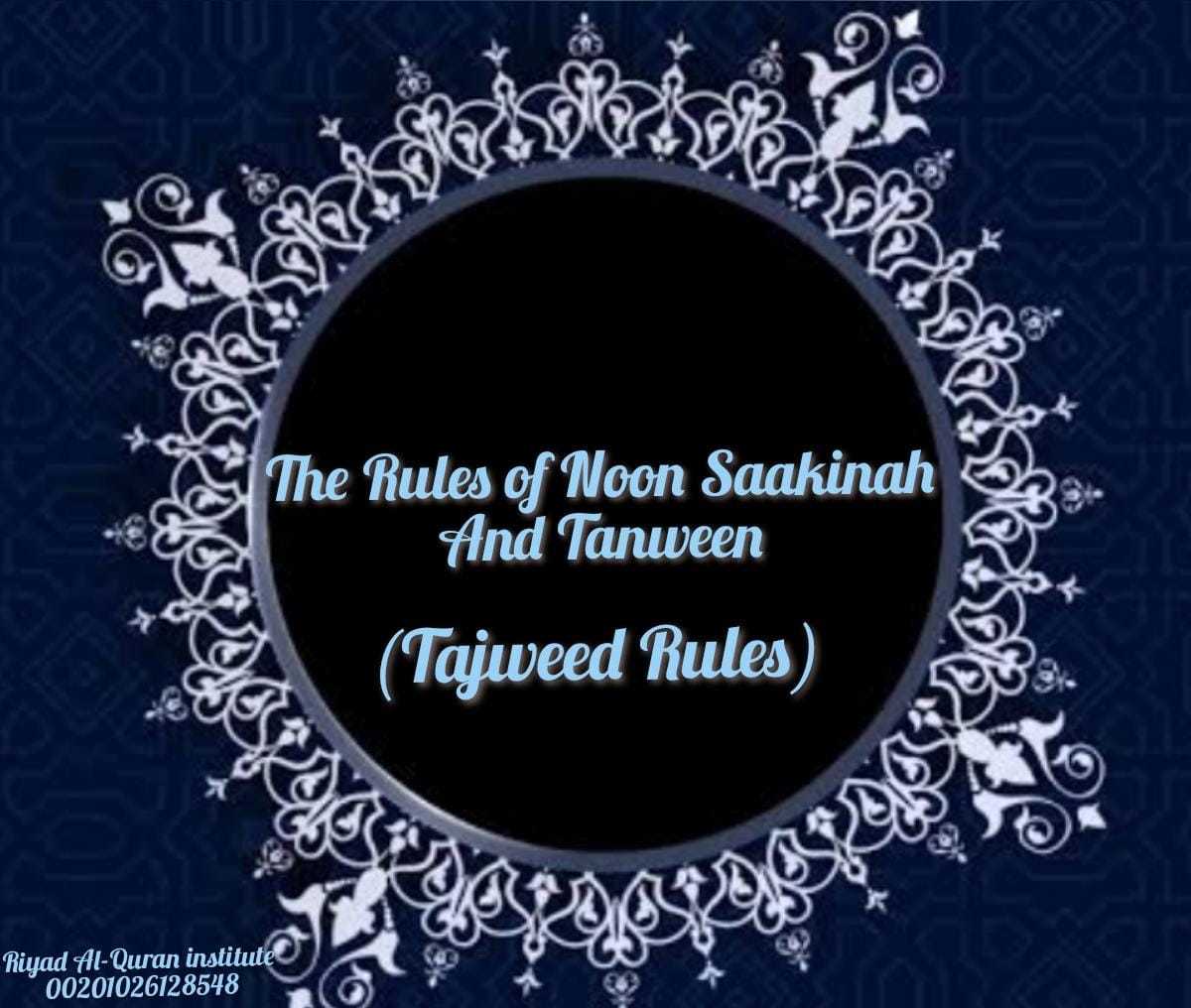Noon Saakinah is free from any vowel but Tanween has two vowels (two fatha, two kasrah, and two dammah). There are four rules related to noon Saakinah and tanween:
1- Al-ith-haar 2- Al-Idgham 3- Al-Ikhfaa 4- Al-Iqlab
1- Al-ith-haar
When noon saakinah or tanween is followed by the six letters of throat (ء هـ ع ح غ خ), then noon saakinah and tanween will be pronounced clearly.
Examples:

 2- Al-Idgham
When noon saakinah or tanween is followed by anyone of these letters (yaa’ي-raa’ر-meemم- laamل- waawو- noonن) which are collected in one word called(يرملون), then noon saakinah or tanween will be merged with four letters which are collected in one word(ينمو) and it is called idgham with ghunnah.
Examples:
2- Al-Idgham
When noon saakinah or tanween is followed by anyone of these letters (yaa’ي-raa’ر-meemم- laamل- waawو- noonن) which are collected in one word called(يرملون), then noon saakinah or tanween will be merged with four letters which are collected in one word(ينمو) and it is called idgham with ghunnah.
Examples:

 But when noon saakinah or tanween is followed by laamل, or raa’ ر, it is called idgham without ghunnah.
Examples:
But when noon saakinah or tanween is followed by laamل, or raa’ ر, it is called idgham without ghunnah.
Examples:

 3- Al-Ikhfaa’
There are fifteen letters remaining:
ت ث ج د ذ ز س ش ص ض ط ظ ف ق ك
When noon saakinah or tanween is followed by these letters, then the sound of noon for noon saakinah and tanween will be hidden.
Examples:
3- Al-Ikhfaa’
There are fifteen letters remaining:
ت ث ج د ذ ز س ش ص ض ط ظ ف ق ك
When noon saakinah or tanween is followed by these letters, then the sound of noon for noon saakinah and tanween will be hidden.
Examples:

 4- Al-Iqlab
When noon saakinah or tanween is followed by letter baa'(ب), then noon saakinah or tanween will be changed into a letter meem(م).
Note:
This meem in Mushaf is a very small meem(م) which is written over noon saakinah to indicate that iqlaab should be done.
Examples:
4- Al-Iqlab
When noon saakinah or tanween is followed by letter baa'(ب), then noon saakinah or tanween will be changed into a letter meem(م).
Note:
This meem in Mushaf is a very small meem(م) which is written over noon saakinah to indicate that iqlaab should be done.
Examples:

 To learn more about these rules to recite Qur’an correctly
join us on our Qur’anic journey
To learn more about these rules to recite Qur’an correctly
join us on our Qur’anic journey
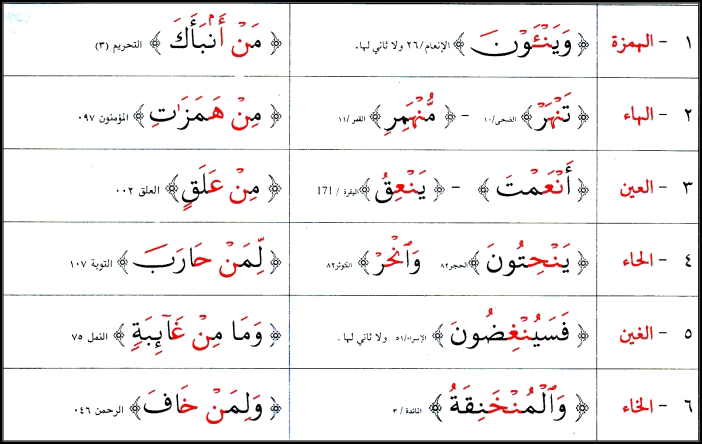
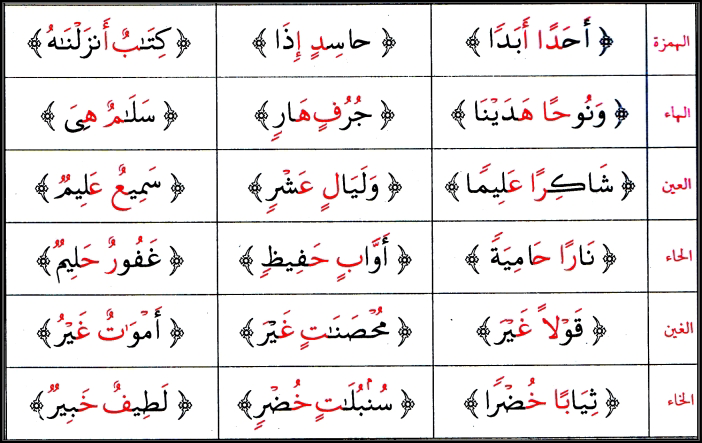 2- Al-Idgham
When noon saakinah or tanween is followed by anyone of these letters (yaa’ي-raa’ر-meemم- laamل- waawو- noonن) which are collected in one word called(يرملون), then noon saakinah or tanween will be merged with four letters which are collected in one word(ينمو) and it is called idgham with ghunnah.
Examples:
2- Al-Idgham
When noon saakinah or tanween is followed by anyone of these letters (yaa’ي-raa’ر-meemم- laamل- waawو- noonن) which are collected in one word called(يرملون), then noon saakinah or tanween will be merged with four letters which are collected in one word(ينمو) and it is called idgham with ghunnah.
Examples:
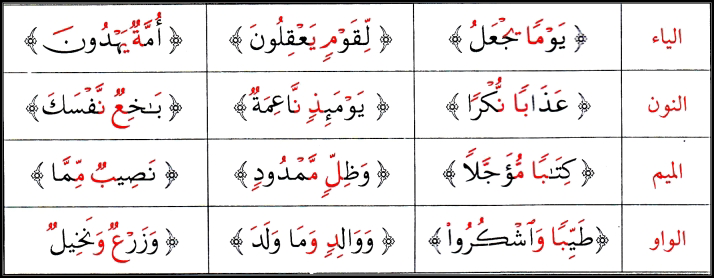
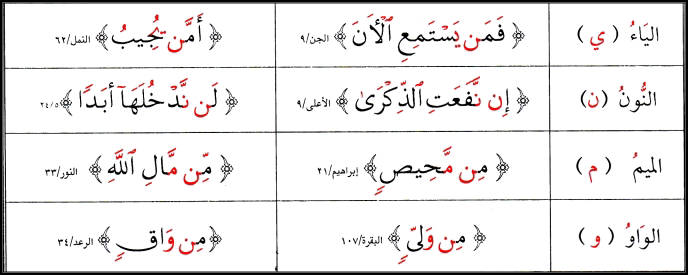 But when noon saakinah or tanween is followed by laamل, or raa’ ر, it is called idgham without ghunnah.
Examples:
But when noon saakinah or tanween is followed by laamل, or raa’ ر, it is called idgham without ghunnah.
Examples:
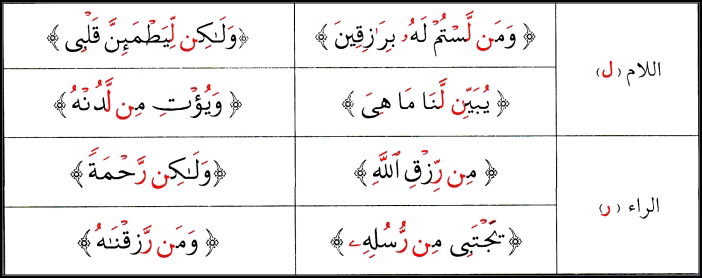
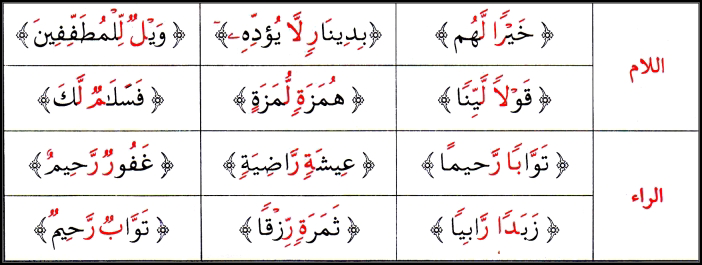 3- Al-Ikhfaa’
There are fifteen letters remaining:
ت ث ج د ذ ز س ش ص ض ط ظ ف ق ك
When noon saakinah or tanween is followed by these letters, then the sound of noon for noon saakinah and tanween will be hidden.
Examples:
3- Al-Ikhfaa’
There are fifteen letters remaining:
ت ث ج د ذ ز س ش ص ض ط ظ ف ق ك
When noon saakinah or tanween is followed by these letters, then the sound of noon for noon saakinah and tanween will be hidden.
Examples:
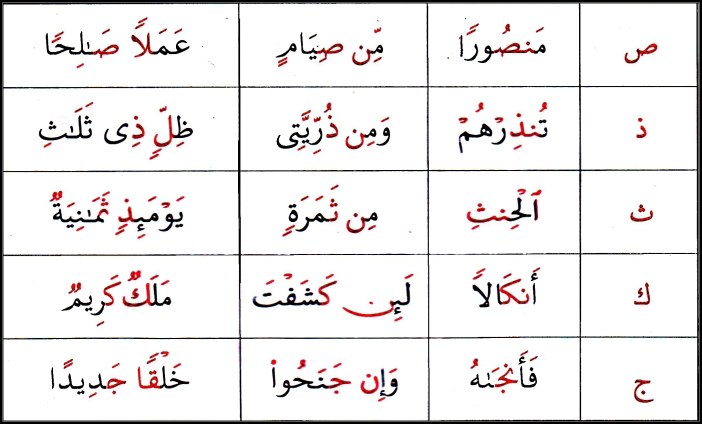
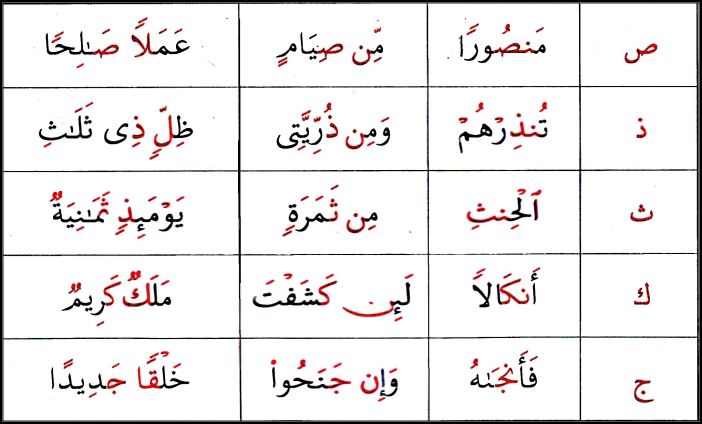 4- Al-Iqlab
When noon saakinah or tanween is followed by letter baa'(ب), then noon saakinah or tanween will be changed into a letter meem(م).
Note:
This meem in Mushaf is a very small meem(م) which is written over noon saakinah to indicate that iqlaab should be done.
Examples:
4- Al-Iqlab
When noon saakinah or tanween is followed by letter baa'(ب), then noon saakinah or tanween will be changed into a letter meem(م).
Note:
This meem in Mushaf is a very small meem(م) which is written over noon saakinah to indicate that iqlaab should be done.
Examples:

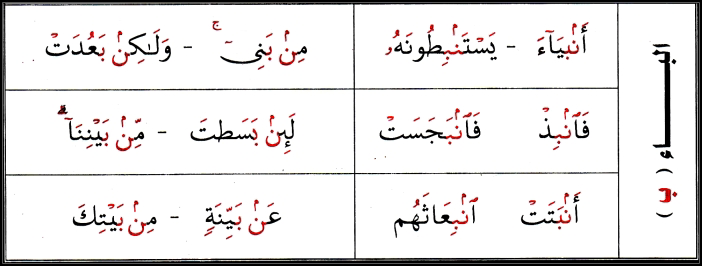 To learn more about these rules to recite Qur’an correctly
join us on our Qur’anic journey
To learn more about these rules to recite Qur’an correctly
join us on our Qur’anic journey This shortcode LP Profile only use on the page Profile

